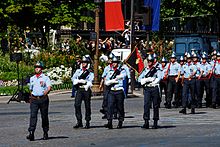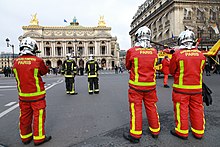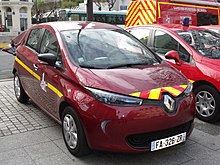
The Public Force are the military force of Monaco. However, the country has a very limited military capability and depends almost entirely upon its larger neighbour, France, for defence. In total, there are over 250 people employed as military personnel in some form. There is no conscription in Monaco.
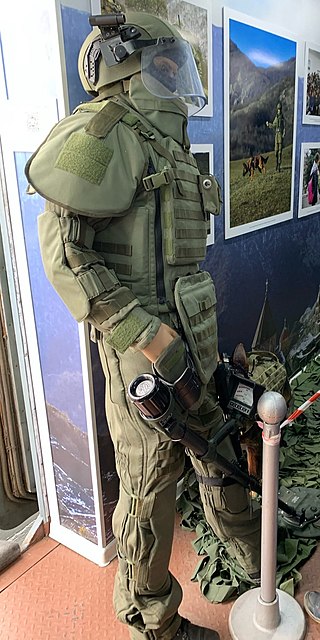
A sapper, also called a combat engineer, is a combatant or soldier who performs a variety of military engineering duties, such as breaching fortifications, demolitions, bridge-building, laying or clearing minefields, preparing field defenses, and road and airfield construction and repair. They are also trained and equipped to serve as provisional infantry, fighting as such as a secondary mission. A sapper's duties facilitate and support movement, defense, and survival of allied forces and impede those of enemies. The term "sapper" is used in the British Army and Commonwealth nations and the U.S. military.

A certified first responder is a person who has completed a course and received certification in providing pre-hospital care for medical emergencies. Certified individuals should have received much more instruction than someone who is trained in basic first aid and cardiopulmonary resuscitation (CPR) but they are not necessarily a substitute for more advanced emergency medical care rendered by emergency medical technicians and paramedics. First responders typically provide advanced first aid level care, CPR, and automated external defibrillator (AED) usage. The term "certified first responder" is not to be confused with "first responder", which is a generic term referring to the first medically trained responder to arrive on scene and medically trained telecommunication operators who provide pre-arrival medical instructions as trained Emergency Medical Dispatchers (EMD). Many police officers and firefighters are required to receive training as certified first responders. Advanced medical care is typically provided by EMS, although some police officers and firefighters also train to become emergency medical technicians or paramedics.

The National Police, formerly known as the Sûreté nationale, is one of two national police forces of France, the other being the National Gendarmerie. The National Police is the country's main civil law enforcement agency, with primary jurisdiction in cities and large towns. By contrast, the National Gendarmerie has primary jurisdiction in smaller towns, as well as in rural and border areas. The National Police comes under the jurisdiction of the Ministry of the Interior and has about 145,200 employees. Young French citizens can fulfill their mandatory service in the police force.
The Orsec-Novi plan, or short Novi plan, is a French emergency plan used for a mass casualty incident (mascal), i.e. if an emergency has a significant number of casualties in a limited area. Its aim is to organize the rescue resources to cope with the concentrated casualties. It was formerly called red plan ; "Orsec" stands for "rescue management", and "novi" for "multiple casualties".
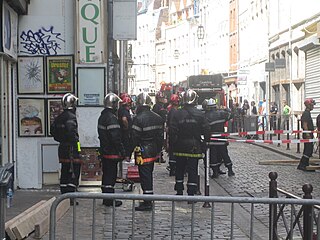
The fire service in France is organised into local fire services which mostly cover the Departments of France, with a few exceptions. There are two types of fire service:

The Marseille Naval Fire Battalion, is the fire and rescue service for the city of Marseille.

David Nicholas Williams Belle is a French actor, film choreographer and stunt coordinator. He is deemed the founder and leading pioneer of the physical discipline parkour, coining it based on his training and the teachings from his father Raymond Belle.

For centuries, firefighters have worn helmets to protect them from heat, cinders and falling objects. Although the shape of most fire helmets has changed little over the years, their composition has evolved from traditional leather to metals, to composite helmets constructed of lightweight polymers and other plastics.
As firefighting has a rich history throughout the world, traditions in this profession vary widely from country to country.

The history of organized firefighting began in ancient Rome while under the rule of the first Roman Emperor Augustus. Prior to that, Ctesibius, a Greek citizen of Alexandria, developed the first fire pump in the third century BC, which was later improved upon in a design by Hero of Alexandria in the first century BC.
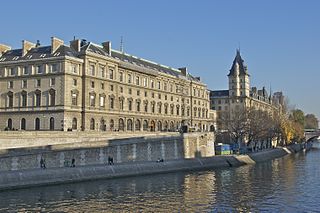
The Direction régionale de la police judiciaire de la préfecture de police de Paris, often called the 36 quai des Orfèvres or simply the 36 (trente-six) by the address of its headquarters, is the seat of the Paris regional division of the Central Directorate of the Judicial Police. Its 2,200 officers investigate about 15,000 crimes and offences a year.

Emergency medical services in France are provided by a mix of organizations under public health control. The central organizations that provide these services are known as a SAMU, which stands for Service d’aide médicale urgente. Local SAMU organisations operate the control rooms that answer emergency calls and dispatch medical responders. They also operate the SMUR, which refers to the ambulances and response vehicles that provide advanced medical care. Other ambulances and response vehicles are provided by the fire services and private ambulance services.

Saint-Julien-sur-Sarthe is a commune in the Orne department in north-western France.

The Engineering Arm, or l'arme du génie, is the Military engineering arm of the French Army.

The Champerret barrack is a building located in the 17th arrondissement of Paris, France. It houses the HQ of the Paris Fire Brigade, but also a fire station of the 5th fire and rescue company. Champerret barrack is also home to a museum, called: Espace Mémoire.
The Paris Fire Brigade Band is a military band of French Army that belongs to the Paris Fire Brigade (BSPP). It also supports the Prefecture of Police.

Corps des Sapeurs-Pompiers de Monaco is a firefighting and civil defense department of Monaco. The Department is responsible for fighting fires and risks of all kinds, providing personal assistance and protecting property on the territory of the Principality of Monaco and neighboring French municipalities on the basis of a 1970 bilateral Mutual Assistance Agreement.

